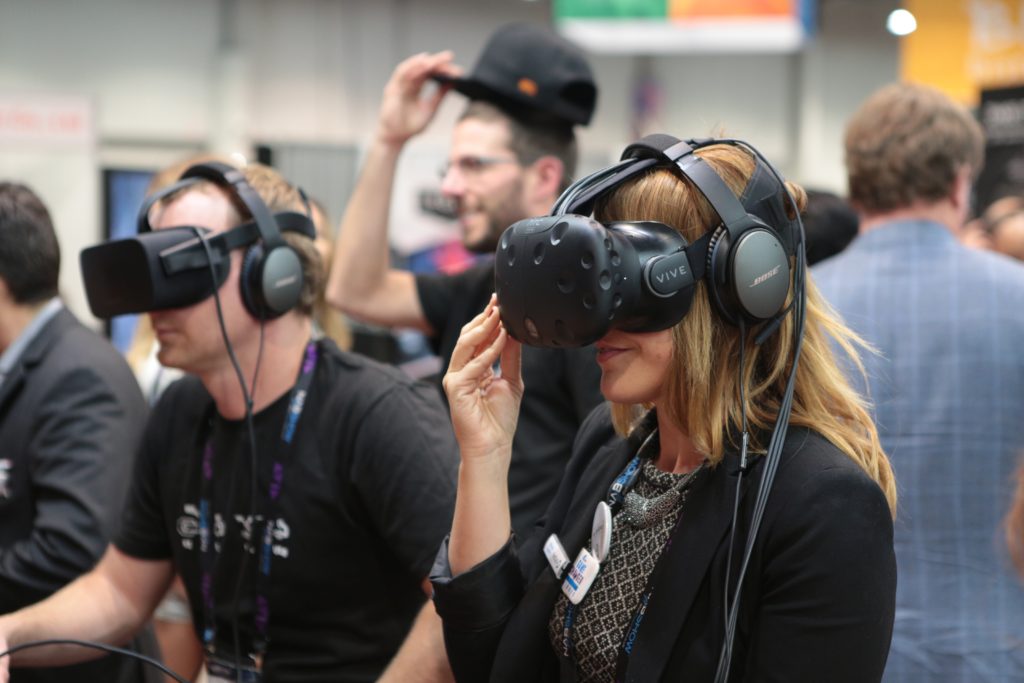With VR arcades and virtual cafes featuring LBE (Location Based Experiences) and OOH (Out Of Home) experiences for mainly HTC Vive popping up in cities all over the world, it’s time for creators and their content to step up their game. This article explores a few details on hardware, software, and what HTC Vive will be in the future.

For the last 18 months I have been testing pre and full releases on various VR platforms, including Samsung’s untethered Gear VR, Oculus Rift, HTC Vive and various forms of CAVE and VPT environments to which our festivals introduce audiences young and old to this new medium. Besides the interesting one-offs – from experimental narrative using photogrammetry and gesture capture to 3D spatialized audio chambers, I currently have over 75 Roomscale or “6-degrees of freedom” (aka 6DoF) VR titles in my Steam account I have been getting to know the HTC Vive at its best and worst.
HTC, or is it Valve? Bet on ideas not plastic
The ‘Vive’ (or HTC Vive tech specifically) is the most advanced tech publicly at this time for Roomscale experiences, but what about tomorrow? HTC jumped at the chance to be relevant again when joining with Valve. Just like with touchscreens on phones, HTC wanted to be first out of the gate and cash in on this emerging tech, while Valve had the hardware, software, platform, ideas and talent to hand over to HTC’s brand machine to make it a hit. As HTC runs in place, Valve has the Steam platform to improve for all creators on any prospective equipment coming.
Valve is interested in competition in the Roomscale hardware world, freely offering their tech to anyone wanting to create their own. Keeping updated with Valve and Steam will ensure the best possible experiences that come up in the future.
Sitting, standing or extra controllers
‘VR will change humanity’, this should be true for all. People with mobility issues, disabilities, and physical limitations want just as much access to games as the able-bodied. Some lend well to this but there is always room for more. Teleporting within an experience has been done many ways and has become a smooth way to travel within the space without needing to physically move.
Roomscale should be designed for the specialty hardware it uses; a controller like the Xbox, often used for games, requires both hands, breaks immersion and is not for the inexperienced. The future will include more eye tracking and improved use of the positional trackers.
Same old same old
Don’t be fooled. When looking for where to spend your money, check reviews, look for demos and avoid getting caught in the re-skins of the same game. Yes, it might be only $3 but those can add up and you want something original (at the very least something the developer spent more than a weekend on).
As important as checking the reviews, remember to review titles you try yourself! Sites like indiegamereviewer.com and Roomscalist.com can only cover so many and the Steam community needs help guiding potential buyers or those looking to use their time at an arcade wisely.
Roomscale is an exciting way to explore real and alternate realities of our world while at home or at a location/event made to showcase this ever evolving technology. Follow Valve, create your own Steam account and prepare for the thrilling experiences to come.


You must be logged in to post a comment.